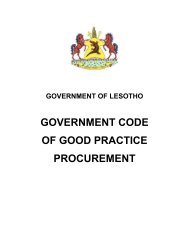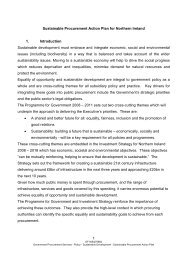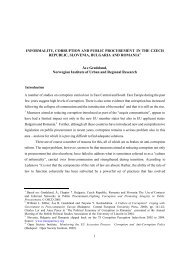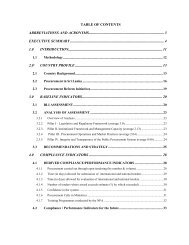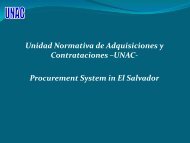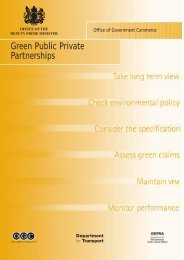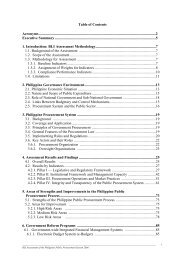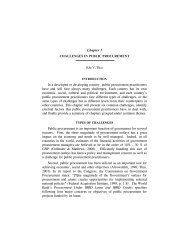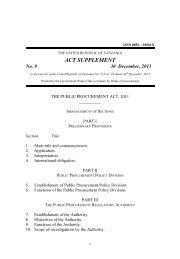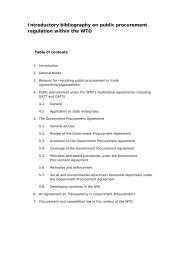Compendium of Country Examples and Lessons Learned from ...
Compendium of Country Examples and Lessons Learned from ...
Compendium of Country Examples and Lessons Learned from ...
You also want an ePaper? Increase the reach of your titles
YUMPU automatically turns print PDFs into web optimized ePapers that Google loves.
StakeholdersThe GPP argues that as many key stakeholders as possible should either be involved in or consultedduring the assessment, planning <strong>and</strong> implementation stages <strong>of</strong> any capacity development initiative. 25 Itlists some <strong>of</strong> these stakeholders <strong>and</strong> highlights their respective roles in strengthening procurementcapacities.The following figure illustrates the critical success factors for procurement capacity development.Figure 5. Critical success factors for procurement capacity developmentPublic Financial Management StrategyNational Procurement StrategyProcurement Capacity DevelopmentCritical Success FactorsStakeholderInvolvementGuidingPrinciplesStrategicPlanningNational Institutions:• Oversight Body• Control Institutions• Civil Service/Min. Educ.• Procurement. EntitiesProc. Pr<strong>of</strong>. AssociationBusiness CommunityCivil SocietyDonor Community<strong>Country</strong> OwnershipBroad StakeholderInvolvementRealistic NeedsAssessmentBuild on Local CapacitiesStrategic PlanningClose MonitoringEntrepreneurial ApproachInstitutional FocusPhased, longer- time focusSequenced with PublicSector ReformCost - EffectiveOutsourcingEnhanced CapacityGreater Value for Money,Effectiveness <strong>and</strong> EfficiencyAnother guide that broadly covers the field <strong>of</strong> procurement capacity development is UNDP‟sProcurement Capacity Assessment User‟s Guide. Capacity Assessment is defined as an analysis <strong>of</strong>current capacities against desired future capacities; this assessment generates an underst<strong>and</strong>ing <strong>of</strong>capacity assets <strong>and</strong> needs which in turn leads to the formulation <strong>of</strong> capacity development strategies. Inparticular, a capacity assessment needs to explore “why” compliance <strong>and</strong> performance are notsatisfactory in order to identify appropriate strategies 26 .2526OECD (2005), Harmonising Donor Practices for Effective Aid Delivery: Volume III, StrengtheningProcurement Capacities in Developing Countries (unpublished), Chapter 2, Good Practice Paper onProcurement Capacity Development, Part III.UNDP (2006), Draft Procurement Capacity Assessment User‟s Guide.COMPENDIUM OF COUNTRY EXAMPLES AND LESSONS LEARNED […] - OECD 2008 47



